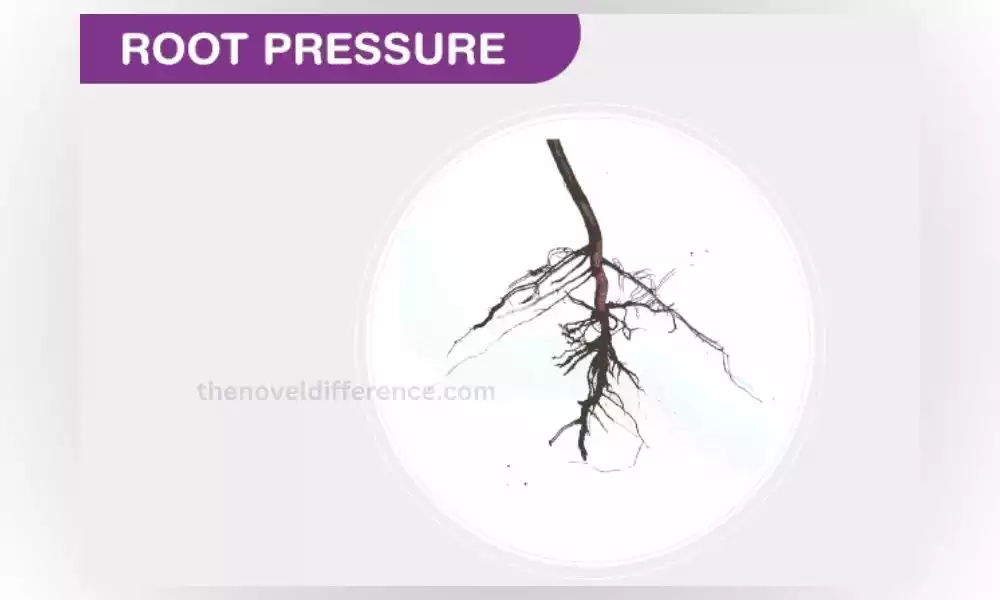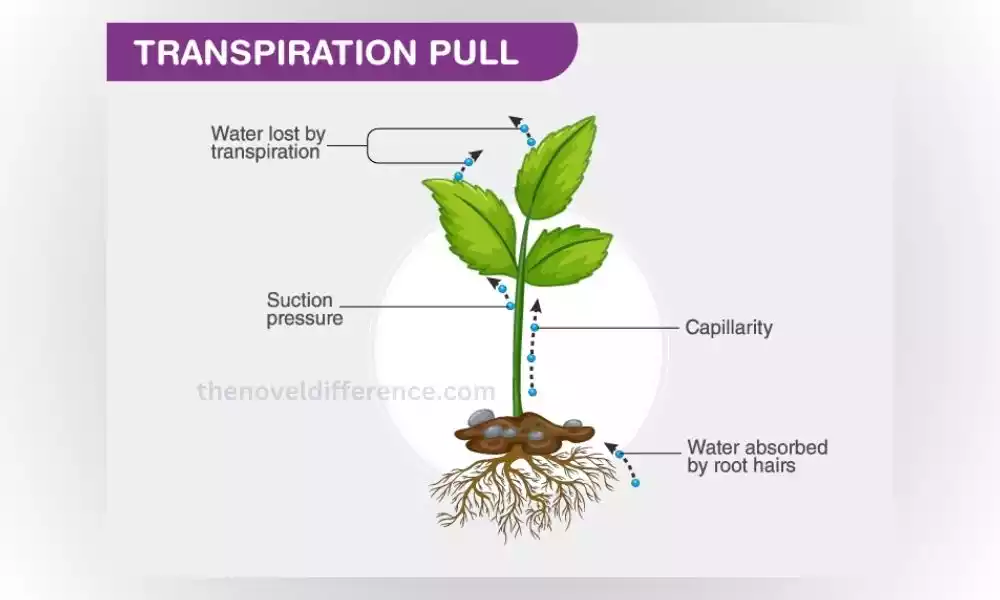Hey there, plant enthusiasts! Have you ever wondered how water moves up from the roots to the leaves of a plant? Well, that’s where root pressure and transpiration pull come into play. In this article, we’ll explore the fascinating world of plant physiology and understand the difference between root pressure and transpiration pull.
Definition of Root Pressure and Transpiration Pull
Root Pressure: Let’s start with root pressure. Imagine your plant’s roots acting like little pumps, pushing water up through the stem and into the leaves. This hydraulic force is known as root pressure. It occurs when water and minerals are transported into the roots from the soil. This influx of water creates pressure within the root system, resulting in an upward movement of water.
Root pressure is most commonly observed in young, herbaceous plants or certain trees during spring. If you’ve ever noticed droplets of water on the tips of leaves in the morning, that’s a sign of root pressure in action!
Transpiration Pull: Now let’s dive into transpiration pull, another remarkable process. Have you ever noticed how a plant seems to be effortlessly pulling water up to its highest leaves? Well, that’s a transpiration pull at work. Transpiration is the loss of water vapor through the tiny pores on the leaf surface called stomata.
As water evaporates from the leaves, it creates a slight suction force, akin to sipping liquid through a straw. This section, combined with the cohesive and adhesive properties of water, pulls water molecules upward through the plant’s xylem vessels.
What is Root Pressure?
Root pressure is the force that helps push water from the roots up through the stems and into the leaves of plants. It’s like a hydraulic force generated by the roots, assisting in the movement of water against gravity. This process is particularly important in smaller plants, seedlings, and certain trees.

How Does Root Pressure Work?
The mechanism behind root pressure is pretty amazing. It all starts with active transport, a process in which plants pump mineral ions, like potassium and magnesium, into their root cells. This creates a higher concentration of ions inside the root cells compared to the surrounding soil.
Now, water molecules are naturally attracted to areas with higher concentrations of solutes. So, when the root cells have more solutes, water flows into the roots through osmosis, increasing the pressure within the cells.
As a result, this increased pressure, known as root pressure, forces the water to move upwards, through the stem, and into the xylem vessels. From there, the water travels to the leaves and other parts of the plant, delivering vital nutrients and keeping the plant hydrated.
When Does Root Pressure Occur?
Root pressure is most noticeable during the night or early morning when transpiration rates are relatively low. During this time, the plant’s roots continue to absorb water from the soil, and the pressure gradually builds up, causing water to ooze out from certain plant parts, such as injured stems or cut leaves. You may have even seen these droplets of water on the tips of leaves in the morning—those are the result of root pressure!
Why is Root Pressure Important?
Root pressure serves a vital purpose in plants. It helps to maintain the continuous flow of water, nutrients, and minerals throughout the plant, ensuring its growth, photosynthesis, and overall survival. By providing a hydraulic push, root pressure contributes to the upward movement of water, even against gravity.
While root pressure alone cannot account for the complete transportation of water in tall trees, it plays a significant role, especially in smaller plants and during certain periods. Together with another process called transpiration pull, it forms a dynamic duo that keeps plants hydrated and thriving.
What is Transpiration Pull?
Transpiration pull is the amazing force that helps plants transport water from their roots up to their leaves. Just like we drink water to stay hydrated, plants need water to survive and carry out essential functions. Transpiration pull plays a crucial role in this process.

How does it work?
Imagine you have a straw in a glass of water. When you suck on the straw, the water rises due to the suction force created by your mouth. Well, plants do something similar, but instead of using their mouth, they use tiny openings on their leaves called stomata.
Stomata are tiny doors that plants can open and close. When they open, water vapor escapes from the plant through a process called transpiration. As the water vapor leaves, a partial vacuum is created, just like when you suck on a straw. This creates a negative pressure, and it’s this negative pressure that pulls water up from the roots.
Why is Transpiration Pull Importance?
Transpiration pull serves multiple vital functions in plants. Firstly, it facilitates the transport of water and dissolved nutrients from the roots to the upper parts of the plant. This water movement is crucial for photosynthesis, as it provides the necessary raw materials for producing glucose and other vital compounds.
Secondly, transpiration pull helps regulate the temperature in plants. When water evaporates from the leaf surface, it cools the plant down, similar to how sweating keeps us cool on a hot day. This prevents overheating and ensures the optimal functioning of plant cells.
Finally, transpiration pull maintains turgor pressure in plants. Turgor pressure is the pressure exerted by water inside plant cells that keeps them firm and upright. Without adequate water uptake through transpiration pull, plants can wilt and become droopy.
Differences Between Root Pressure and Transpiration Pull
Now that we’ve covered the basic mechanisms of both root pressure and transpiration pull.
Let’s summarize the key differences between the two processes:
1. Driving Force: Root pressure is primarily driven by osmosis, while transpiration pull is driven by the loss of water through transpiration.
2. Magnitude: Root pressure is relatively weaker and can only push water a short distance, typically a few meters. In contrast, transpiration pull is a much more vital force and can move water up to great heights, even hundreds of feet in tall trees.
3. Occurrence: Root pressure is more significant during periods of low transpiration, such as at night or in humid conditions. Transpiration pull, on the other hand, is a constant process that occurs during daylight hours when the stomata are open.
4. Contribution: Root pressure plays a minor role in water transport compared to transpiration pull. It is more relevant in small herbaceous plants and is not the main driving force for water movement in most plants.
Similarities between Root Pressure and Transpiration Pull
Root pressure and transpiration pull are both crucial mechanisms that enable plants to move water from their roots to other parts of their structures. They play a significant role in the overall water transport within plants, but let’s explore how they share some common ground.
1. Water Movement: Both root pressure and transpiration pull are responsible for the movement of water in plants. While they operate in different parts of the plant and have distinct driving forces, their ultimate goal is to ensure that water reaches where it’s needed.
2. Contribution to Water Transport: Root pressure and transpiration pull work hand in hand to facilitate the overall water transport within plants. Root pressure provides an initial push, particularly in small herbaceous plants, by exerting pressure on the water in the roots. Transpiration pull, on the other hand, helps sustain the movement of water through the plant’s vascular system.
3. Environmental Influences: Both processes are influenced by various environmental factors. Factors such as temperature, humidity, and light intensity can impact the rate of transpiration, thereby affecting the power of the transpiration pull. Similarly, these environmental cues can also influence the rate of root pressure and the overall movement of water within the plant.
4. Maintenance of Plant Hydration: Root pressure and transpiration pull are essential for maintaining plant hydration. They ensure a continuous supply of water to the leaves, facilitating crucial processes like photosynthesis and nutrient transport. Without these processes, plants would struggle to survive and thrive.
5. Role in Plant Adaptation: Root pressure and transpiration pull play a crucial role in plant adaptation to varying environmental conditions. For instance, during periods of water scarcity, plants can regulate their stomatal openings to reduce transpiration, conserving precious water resources. In contrast, under favorable conditions, plants can adjust root pressure to enhance water uptake.
Conclusion
Root pressure and transpiration pull are two distinct mechanisms that contribute to the upward movement of water in plants. Root pressure relies on osmosis and creates a positive hydrostatic pressure to push water upward, while transpiration pull is driven by the loss of water through transpiration and operates through cohesive and adhesive forces.
Understanding the difference between root pressure and transpiration pull helps us appreciate the complex and remarkable adaptations that plants have evolved to survive and thrive. These processes ensure the availability of water and nutrients throughout the plant, supporting growth and photosynthesis.
So, the next time you observe a plant flourishing, remember the intricate dance between root pressure and transpiration pull that allows it to thrive!
